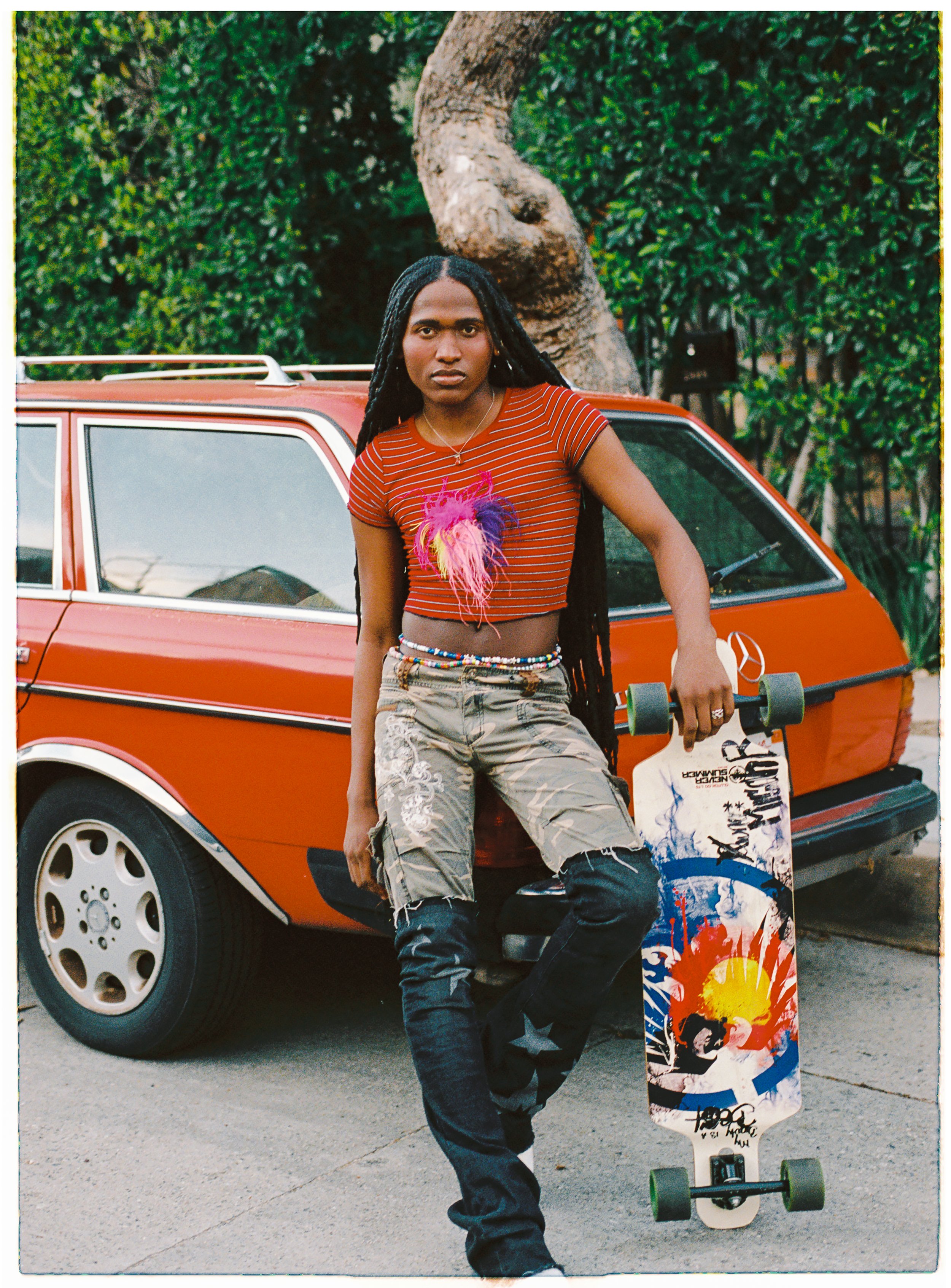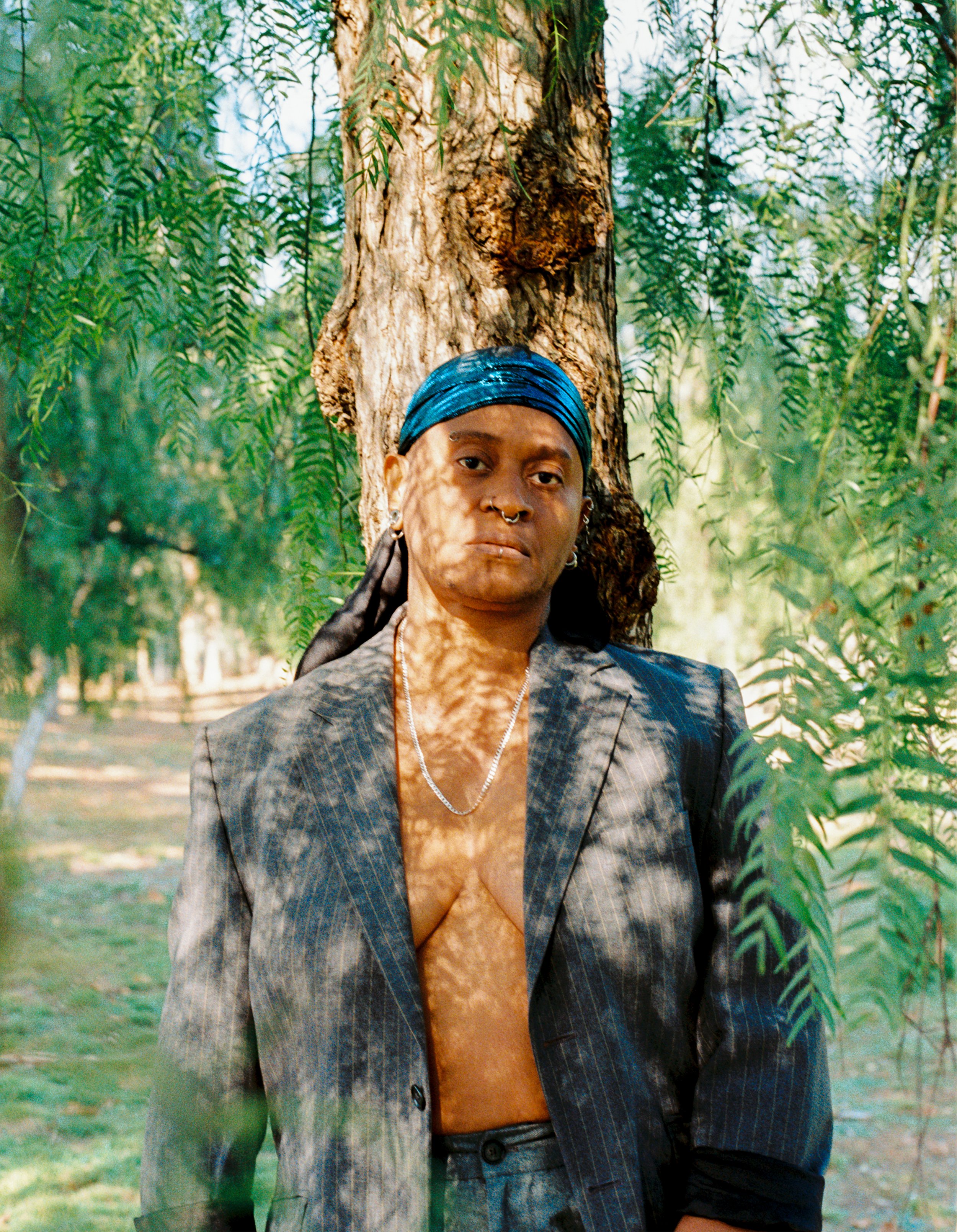Liam Woods
Image by Liam Woods
Liam Woods is a force in the realm of visual storytelling. As a Non-Binary photographer based in LA, they have meticulously crafted a unique style. Their photography breathes life into moments, capturing the pulse of vulnerability within Queer Black and Brown communities.
Through a lens adorned with vibrant hues and imbued with a sense of movement, each snapshot tells a profound narrative - an ode to the raw and candid human experiences that are often overlooked. The colors in Liam’s art aren't just visual, but emotional palettes, painting a canvas that speaks volumes about resilience and authentic expression.
At the core of Liam's visual odyssey is a deep-seated mission to empower and uplift. Their art isn't merely an exploration of color and motion; it's a manifesto for representation and inclusivity. Whether partnering with renowned brands like Apple and Levis or gracing the pages of esteemed publications including People, Vogue Paris, The New York Times, and many others, Liam's work speaks to a broader purpose - to foster a world where their voice and others like them are celebrated and echoed, reminding us that true strength lies in embracing our authentic selves.
Hi Liam! Tell us a little about yourself — when did you first become interested in photography and how did you get to where you are today?
I’m a Non-Binary photographer based in Los Angeles with North Carolina roots. I’ve been shooting for a little over 7 years now and 3 years full time professionally.
My life sometimes feels like a cinderella story. I graduated from Hampton University with my Bachelors in communications. I thought I was going to be the next big shot television anchor for CNN. But life comes at you hard and fast. Instead, I ended up working a lot of minimum wage retail positions. I couldn’t find a television station anywhere that would give me a chance just to put my foot in the door in my field. I spent nearly all of my twenties working for stores like Forever 21, Office Depot, and Zara, and lived with my parents for a few years trying to save money. I didn’t really have a lot of hope for myself. My depression was at an all time high while also discovering I had Borderline Personality Disorder.
Growing up in the south being Black, Queer and typically the only person of color at all-Christian private schools, life was hard. I am also a Pastor’s kid which came with a certain standard of public appearance that I had to uphold. I didn’t really have any security to be myself and was often left alone with my imagination and my love for music and books.
When I was in 7th grade, the girl I had liked told everyone I was Queer. The girls in the P.E. locker room would cower and cover themselves behind the locker doors in fear of me. I felt like a monster—a pariah to society who often faced verbal and physical abuse from teachers and students alike until I graduated high school.
When I picked up a camera in my late 20s, I wanted to share joyful stories of Queer Black and Brown people. I didn’t really have any representation of people like me. So I wanted to create art that celebrated our lives that everyone could witness and look up to. Why be a character in someone else’s book, when you have the power to write your own stories? Having a camera gave me the power I needed.
Photographer Liam Woods
“Take time to work on your craft and don’t be afraid to put yourself out there! What’s meant for you is meant for you. Failure and rejection is a part of everyone’s process. But, if this is something you’re truly passionate about, the rest will come. It just takes time.”
Your portraits are quite intimate, which requires a certain level of vulnerability from the people you photograph. How do you make a connection and establish trust with your subjects?
I’ve just been really lucky that people trust my vision. Treating people how you want to be treated is a simple moral that can go a long way. Having a good sense of direction and designing a mood board to show to clients helps them to better understand the feel of the shoot. These are the things that have been really useful to me in my experience.


What has been one of your favorite projects to work on so far? What would be your dream creative project or subject to shoot?
It’s so hard to pick one. All three of these projects are tied together.
One of my favorite projects that I’ve worked on was shooting my first print cover for People Magazine. It was something I had always dreamed about and it finally became a reality. To top it off, the shoot was for one of my favorite actors, Elliot Page! I am a HUGE Umbrella Academy fan and superhero comic nerd. Elliot playing Viktor was one of the first openly Trans heroes I’ve seen on camera. Being a part of the Trans community, it really meant a lot to me to work beside him. He was so sweet and kind and an absolute pleasure to have on set. People Magazine and the editors I worked with really made my dreams come true that day. It will forever be one of my proudest moments.
The second project was another mind blowing experience with People Magazine. I shot the LA Press for Hunger Games: Ballad of the Songbirds and Snakes with lead stars Rachel Zegler and Hunter Schafer. I remember years ago in one of my manifestation journals, I wrote down over and over how I wanted to photographer Hunter after her debut on Euphoria. It’s also been a dream of mine to step into the big leagues shooting press for a major film and my mom and I are diehard Hunger Games fans. We watch all the movies together every Thanksgiving. Walking onto that set, I nearly cried for joy. It was truly a beyond magical experience and again the whole team was wonderful!
The third project was shooting my first international campaign with Levis. That was a really big gamble I took. I saw this agency that worked for them and slid in their DMs pitching myself not having much experience yet. They took me on immediately and before I knew it I was on a plane to Mexico City, London and Tokyo! I’d never left the U.S. until then. For that to be my first experience leaving the country, I felt truly blessed and grateful. I remember when I was in Mexico, I sat on a rooftop in between sets crying while watching the volcanoes. “You did it,” I told myself. “You really are out here doing everything you prayed so hard for.”
Another creative project I would love to pursue is working with Nike. I’ve been trying for years to get my foot in the door, but I know one day my time will come. I just have to keep doing my thing.
Have you encountered obstacles or challenges in your journey? If so, what changes would you like to see that could better support underrepresented photographers in the field?
In the industry, most gigs are based off of who you know more than what you know. And a lot of communities like to run in tight circles. It can be hard finding where you fit in especially as a newcomer to big cities like LA. Despite all my wins working for brands like Apple, Adidas, and Levis, I’m still often faced with rejection, told I don’t have enough experience, or replaced last minute. It can be daunting and sometimes make you question yourself.
I think something that could be really helpful in the photo community is having more Black and Brown Artists in leadership and hiring positions who are eager to uplift our stories. A lot of producers who hire all come from very similar backgrounds and only stay with the same five photographers for everything and the same style of photography. There’s too many incredible underrepresented artists out there and we need risk takers to break the formula and showcase their brilliance.
How did you find your own photography style? What inspires your aesthetic?
I found my photography style going through my personal life experience as well as a lot of trial and error. I’ve always loved vibrant, nostalgic colors. It brings me back to the joys of early childhood when life was full of imagination and wonder. I wanted to bring that energy back to life within my work.
As time moved on, I began utilizing that vision to bring Black Queer stories out of the darkness. I wanted to see a world of vivid color and celebration around us so we may never forget the joy and beauty that are all within us. Society may try to snuff out the light, but we will always be here. As our histories have a right to be here and to be remembered.
Image by Liam Woods
Do you shoot exclusively on film? What are some challenges and rewards of shooting analogue?
Almost 90% of my work is film and sometimes I have work that requires a little digital here and there if there’s a same day turn-around project. I’d have to say the greatest reward with shooting analogue is that it taught me how to move with intention. The greatest challenge is how much it can drain your bank account. Ha! But there’s nothing quite like shooting film. The colors, textures and depth make everything feel so real it feels like you could reach out and immerse yourself into that universe.




What advice would you give to new photographers who are just starting out?
I’m terrible at giving advice. But, I’ll say take time to work on your craft and don’t be afraid to put yourself out there! What’s meant for you is meant for you. Failure and rejection is a part of everyone’s process. But if this is something you’re truly passionate about, the rest will come. It just takes time.
What are you working on now and what’s up next for you?
Sadly, these NDAs have my lips sealed. But what I can hint is another super hero shoot is on its way!
Thank you for sharing with us Liam! To view more of Liam’s work, visit their website and follow them on Instagram.
All images courtesy of Liam Woods.



